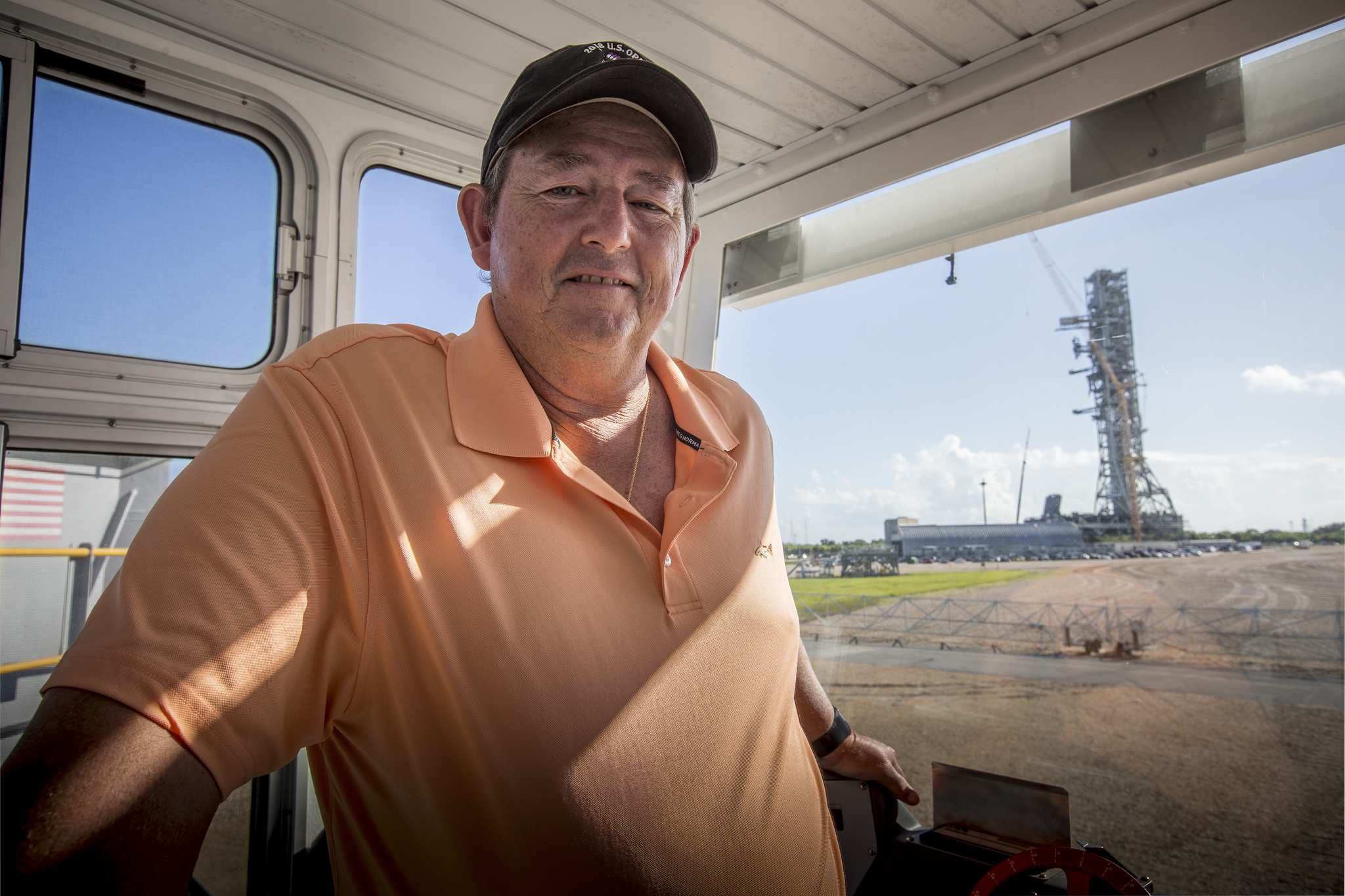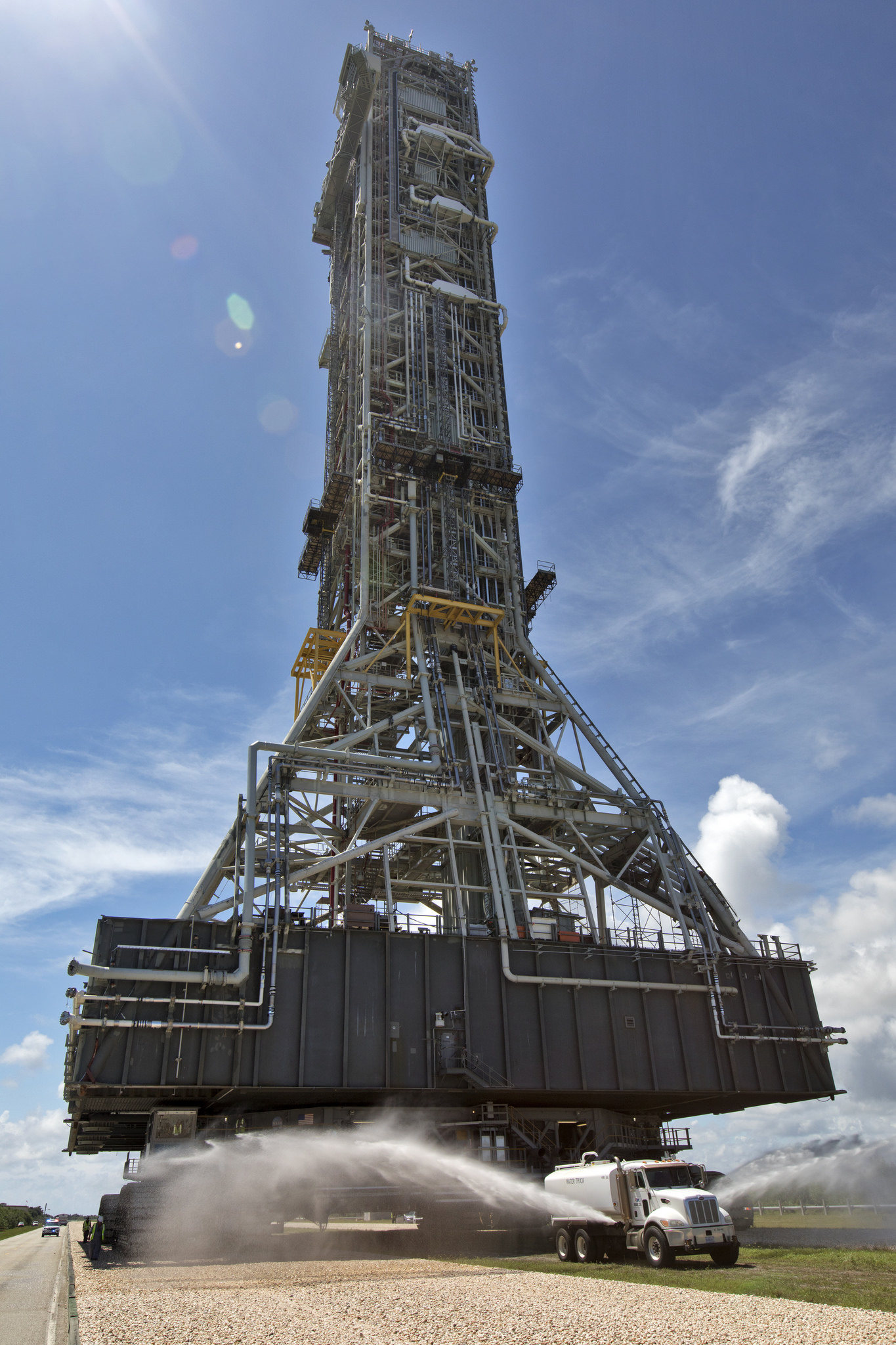What does it take to drive one of NASA’s crawler-transporters?
“Patience,” says Bob Myers, a mechanical systems engineer on the Test and Operations Support Contract and one of six crawler drivers at the agency’s Kennedy Space Center in Florida.

Recently, Myers sat in the operator cab of the crawler-transporter known as CT-2, picked up the mobile launcher that will be used to launch NASA’s new Space Launch System rocket and moved it slowly and carefully along the crawlerway out to Launch Pad 39B for testing and verification, and then back to the Vehicle Assembly Building, marking the first time the modified mobile launcher has taken such a journey.
“It’s a big responsibility,” Myers said. “There’s a lot of weight on my shoulders, so to speak.”
And he’s not kidding. The crawler itself weighs about 6 million pounds. Add 10.5 million pounds from the weight of the mobile launcher and its launch umbilicals, and that’s 16.5 million pounds, traveling along at about .7 miles per hour on a compacted rock bed.
Once all the crawler systems were activated–a process that takes about 30-45 minutes–Myers pushes a button to start up the crawler and begin moving. The steering wheel is about six to seven inches wide, a far cry from the steering wheel in the supercharged truck he drives. Myers said he just puts his truck into drive and it’s already moving faster than the crawler. The crawler uses air brakes to slow or stop, but engineers usually allow it to roll gently to a stop on its own so they do not jerk the payload abruptly.
During the drive, Myers is not alone. At least 30 engineers and technicians are inside or outside the crawler, performing a multitude of tasks to make sure the crawler and mobile launcher are level and everything is operating as it should during the trek to the pad and the Vehicle Assembly Building.
Engineers, construction workers and technicians prepared the crawler for the increased weight of the SLS by upgrading power generators, electrical controls, and the jacking, equalization and leveling cylinders. Manual controls were previously replaced with programmable logic controllers, or computerized controls.
“The crawler has longevity,” Myers said. “Upgrades have brought the crawler into the 21st century and made it much easier to drive, but it still feels like a ship on land.”
As the center prepares for Exploration Mission-1, and many missions beyond, Myers is looking forward to seeing the SLS and Orion spacecraft stacked on the mobile launcher.
“It will be an honor carrying America’s rocket,” Myers said. “In a sense, we’re carrying America’s future.”

























